Classroom Tips
Check Here Monthly for Tips, Hints, Observations and Thoughts on the
World of Teaching and Students.
For more ideas and products to help to provide your students with the highest-quality standards-based instruction click
Here
_____
November 2025
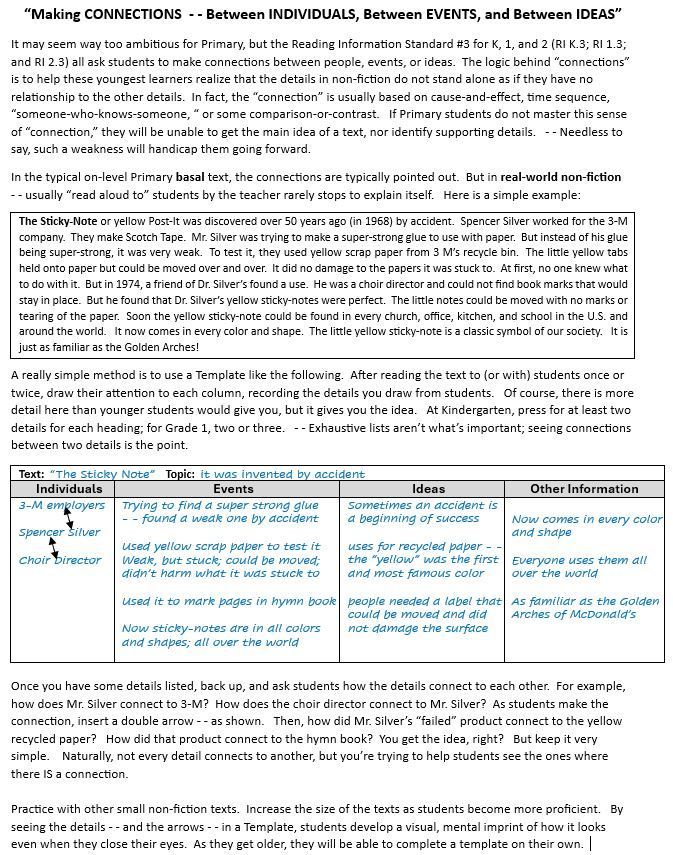
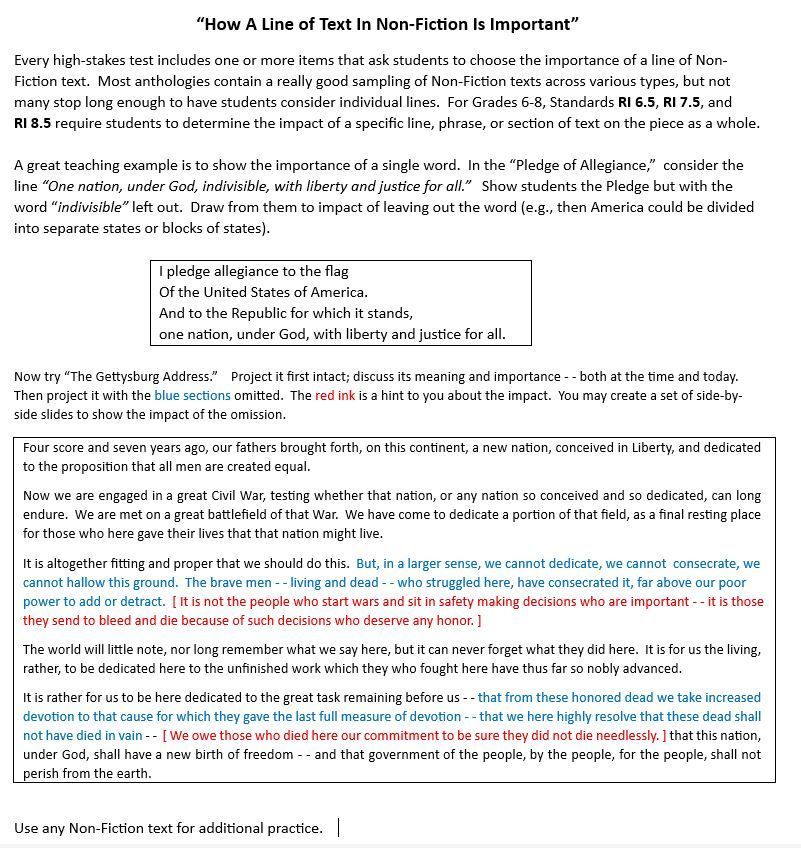
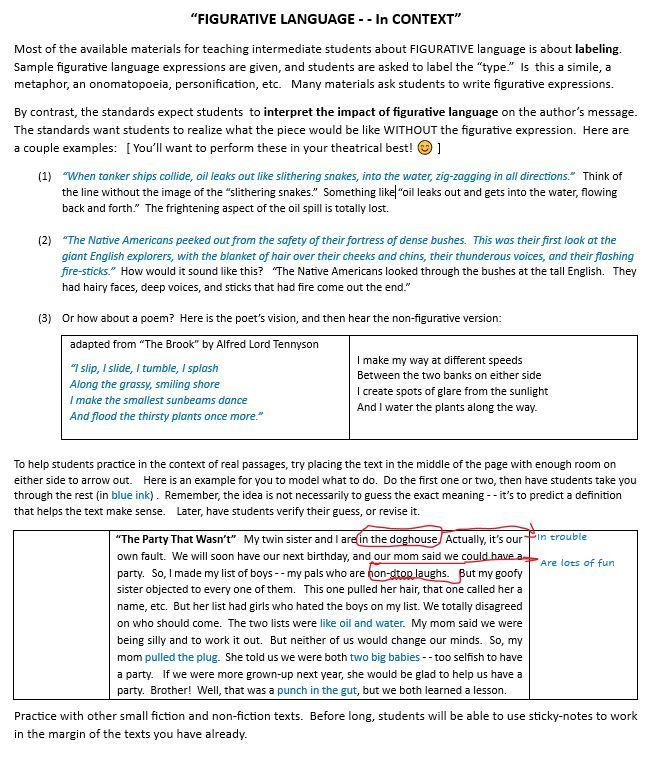
_____
October 2025
MULTIPLICATION MATH FACTS PRACTICE
*Teacher has set of flash cards, and chooses 15 cards at random, across all fact families.
* Students have paper numbered 1-15.
*Teacher holds up a Math Fact Flash Card, says the fact on the card, counts to him/herself thousand one, thousand two, thousand three, thousand four, thousand five - - giving students 5 seconds to determine the answer to the first flash card. Teacher says the fact again, and puts the card aside. This gives students an auditory and visual stimulus for the fact.
*After the teacher does this for 15 fact cards, he/she stops and reviews the answers with the students, who grade each other’s papers. Any facts that a student misses, he/she takes flash cards home for those facts to practice.
*The teacher should have key rings with small flash cards on the rings, and students take home only those facts that they miss to practice.
*This type of assessment could be done on Monday and Friday of each week. Students would be able to practice facts missed on Monday, and then would have a different set of cards to take home for the weekend.
*The teacher picks the cards totally at random, and does not pick all the 9’s or 5’s, but mixes them; some may get chosen on both Monday and Friday of a given week. If you want to have a specific focus, it could be that you pick specific one that students have been struggling with on other work assignments, and assess those.
*It is relatively easy for students to know the 2’s, 5’s, and 10’s. The 9’s facts are easy because every math fact for the 9’s has an answer that is one less than the number being multiplied by 9, and the two numbers in the answer add up to nine (e.g., 6 x 9 = 54: 5 is one less than 6, and 5 + 4 is 9, so you know that the answer is 54; 8 x 9: we know it starts with a 7, because 7 is one less than 8; and 7 + 2 = 9, so the answer is 72.)
We suggest using this in place of Mad Minutes or timed tests. The strategy above allows the teacher to determine what facts students know and do not know. The key here is to have sets of small flash cards that students can take home for practice and they can practice with each other during the school day for a set amount of time.
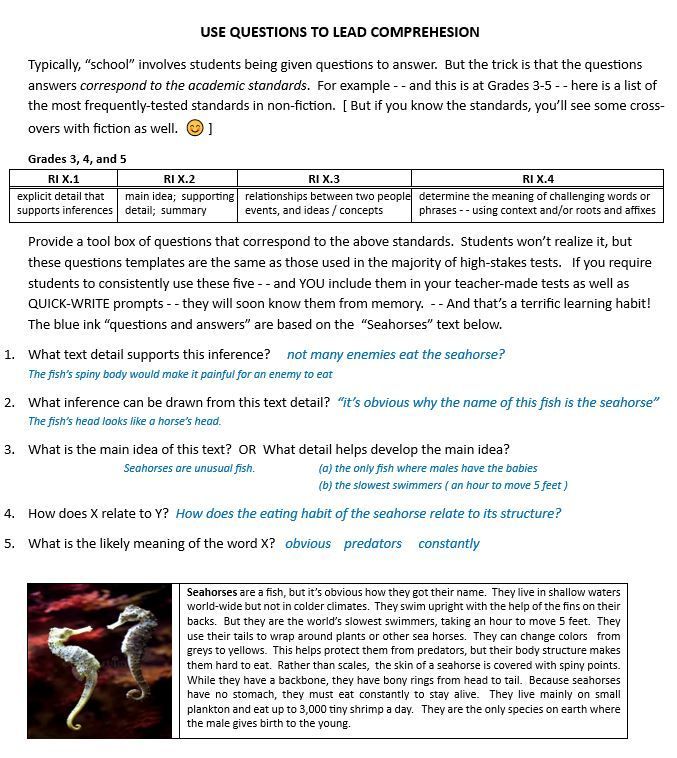
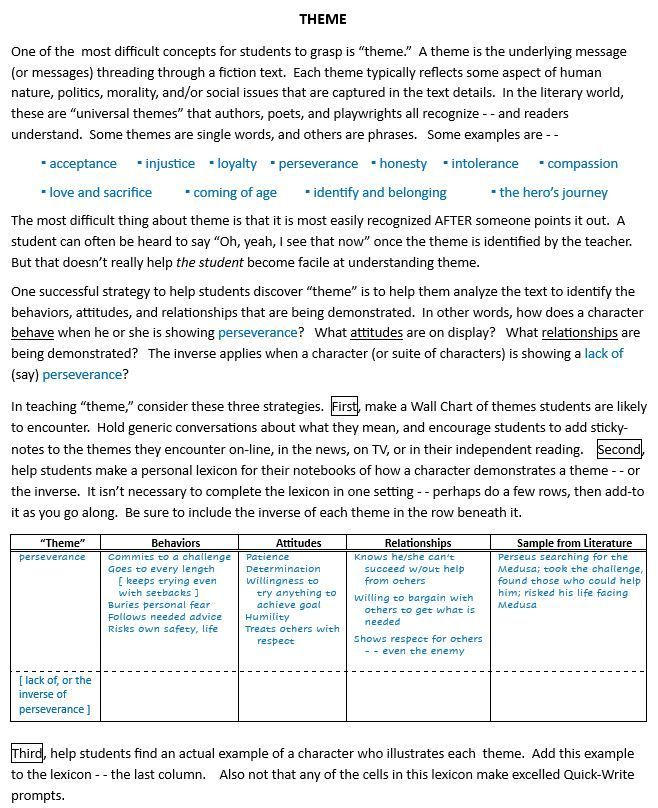
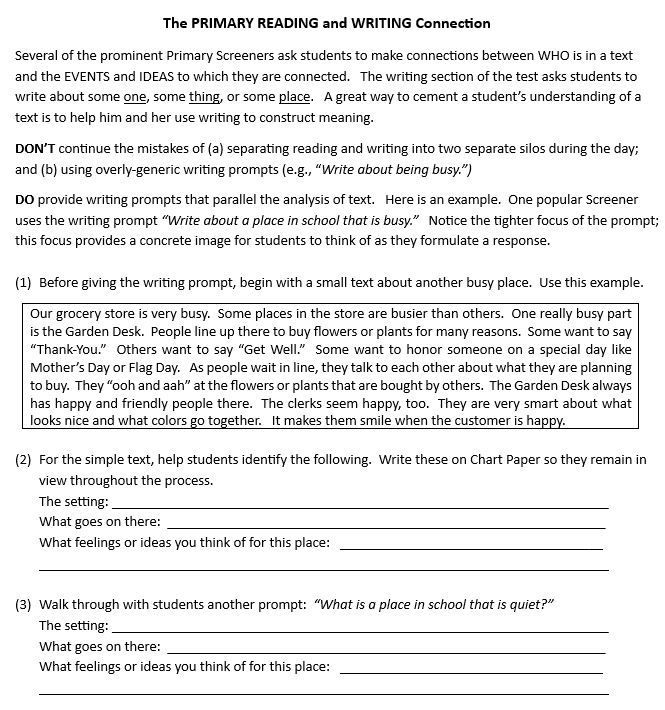
_____
September 2025
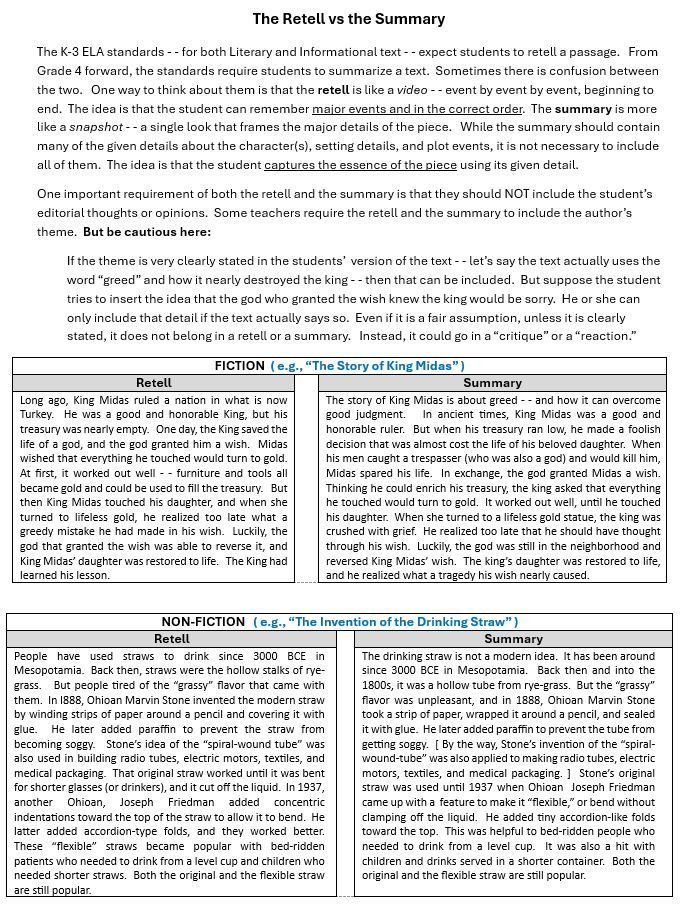
_____
August 2025
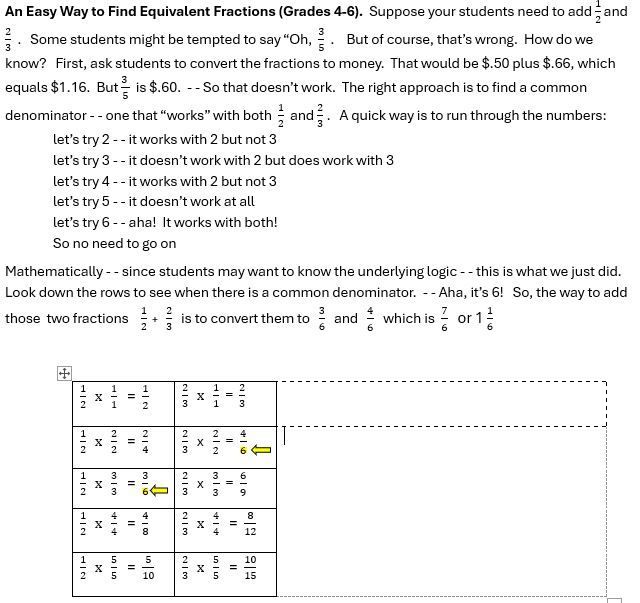
_____
July 2025
EXPLICIT DETAIL and VIABLE INFERENCES. One of the demon standards in every state is the requirement that students make viable inferences supported by text detail. Our careful examination of Ohio’s State Academic Test results between 2017 and 2024 has revealed that most students struggle identifying an inference that is supported by text detail. Naturally, this weakness spills into their writing, and they struggle drawing inferences from research detail. This difficulty worsens over the years as students are expected to comprehend text without the teacher coaching them through it.
A great way to teach inferences is to begin with a student. Ask students to identify five explicit details about him or her - - details that are observable to everyone (e.g., gender, clothing, glasses (or not), hair color, etc.). Then ask students to make inferences that are supported by text detail. For example, if the student is wearing shorts, a reasonable inference is he or she thinks it’ll be warm today. If he or she is looking downward and shifting uncomfortably, a viable inference is he or she is embarrassed or shy. The key is to remind students that they cannot make inferences based on prior or private knowledge of the student (like, a really good soccer player). The inferences must be supported by the explicit detail actually there.
Follow that up with a familiar object in the room - - say an old table or a piece of furniture with scratches. If you have an antique object you could bring in (say, a potato ricer, a cherry pitter, a butter mold, or an egg coddler), it makes a fun mystery. Again, ask students to identify explicit details. Then, ask them to make inferences about the object - - supported by the explicit detail.
The transition to text begins with a few scenarios that are full of explicit detail. Ask students to make viable inferences. Then - - in the lower rows of the able, do the reverse. For each inference, make up a few sentences that have the explicit detail to support it.
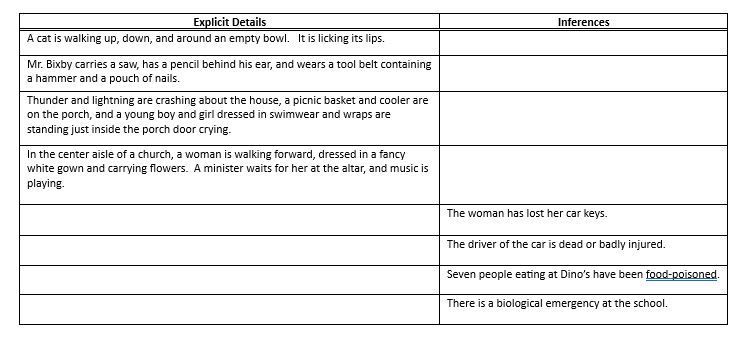
_____
June 2025
INDEPENDENT READING. The most successful 5-8 teachers have resurrected an old reliable. With so much emphasis on the “the quick-and-the-digital” and the instant i-pad to retrieve information, requiring students to read independently lost traction for awhile. But thankfully, enlightened teachers have rediscovered it. Students select a text from different genres, read it within the quarter, and submit a brief report, including a personal reflection. Using College Board or NCTE college reading lists, teachers require a mix of contemporary and classical; fiction and non-fiction; prose, poetry, and drama. Some teachers require the selection to correspond to the “theme” of a Unit; other teachers not so much. The idea is that students read on their own - - at home or in study hall - - and are held accountable for doing so. There are two keys: (1) avoid over-kill - - no need to begin with War and Peace or The illiad. Begin in grade 5 with on-level work (or slightly-below-level for strugglers) of around 200 pages - - or less. (2) Have a template for students to complete. Again, don’t get carried away.
Here is a workable sample. Quick-check these at least once every ten days, a few students at a time. Leave a comment. The final submission is the final report. HINT for building capacity: Once you develop the habit in students, assign a writing partner to do the reviewing - - and leave a comment!
[ NOTE: Two of these blanks will fit on one 8 ½ X 11 page. Place them in a Notebook; Submit on Request; Replace ]
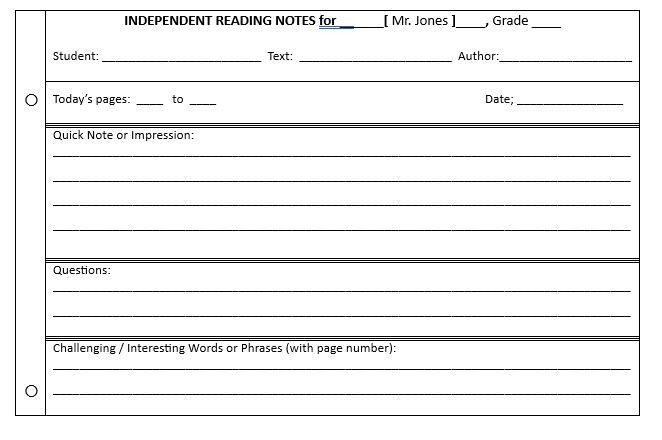
_____
May 2025
Try Context
Before starting a new topic, link it to something in students’ daily lives as a problem to be solved. For example, when introducing the use of
context to predict the meaning of unfamiliar words, display a small passage (from science, social studies, literature, etc.) that includes unfamiliar terms - - bolded. Say “Suppose we saw this passage on an important test. There is no time to look up the bold words, but we need to try to define them to unlock the meaning of the text.”
_____
Dignify the Error
Student egos are very fragile - - especially in front of their peers. Good teachers are just as concerned about student dignity as they are academic correctness. Instead of labeling incorrect answers as “wrong” or responding to Q and A prompts with the usual “no-o-o-o; who else?” try one or more of these:
a. “How did you arrive at that answer? Tell us what you were thinking.”
b. “Not quite right just yet! - - But you’re getting so close.”
c.
“Back up just a step or two, and try again.”
d. “Tell us more.”
_____
On the Level
As teachers, we typically ask all the questions. Occasionally, flip it around. Say to students,
“In your notebooks - - so you save them for reference - - write three questions about the demonstration I just showed you. [ or the lecture I just gave, or the story I just read, or the math problems I just worked with you. ]
It’s easiest if you write these on a piece of Chart Paper or display them on the SmartBoard
“Question 1: Write a question whose answer is found in the texts [ in your notes, etc. ]
“Question 2: Write a question whose answer must be inferred . . . . where we must look between the lines or behind the text.”
“Question 3: Write a question whose answer is hypothetical or ‘what if.’
Then collect the questions; mix them up, and redistribute among the students - - each getting a set of questions written by someone else. The act of writing and answering will force students back into the material [ the demo, the text, the math problems, etc. ] twice - - the perfect way to help them internalize the content.
